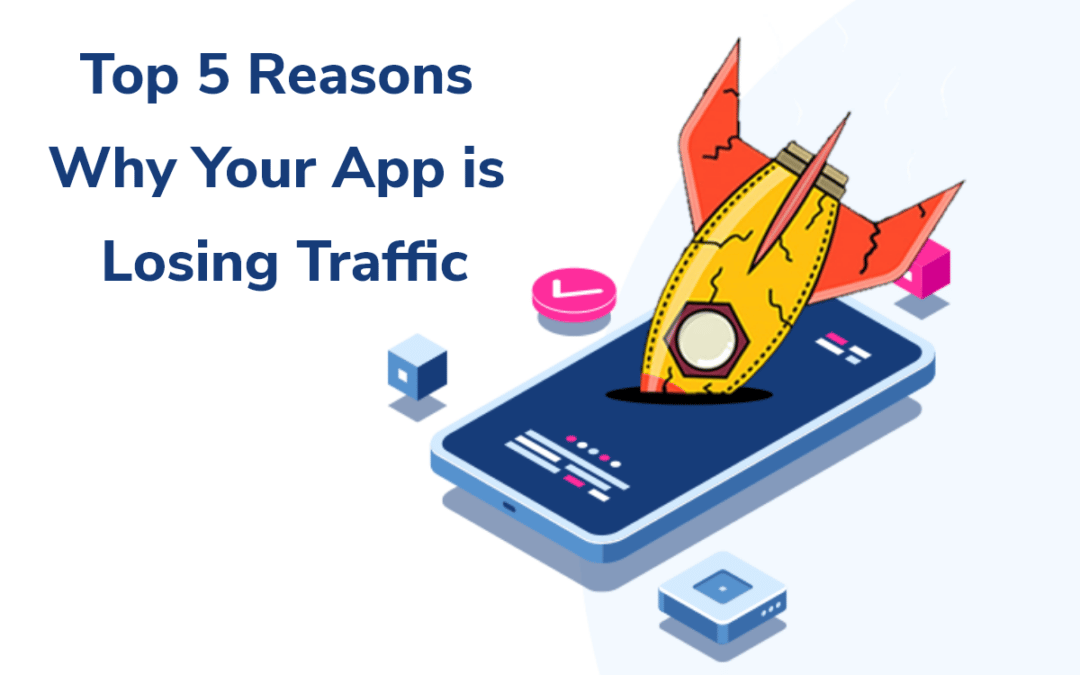Conversion rate is one of the most vital metrics of measuring the success of your app. The few main reasons why your app is losing organic traffic are:
- Low app awareness.
- Decrease in browsing traffic. (Features, Google UACs, top charts).
- Slow referrer traffic (external app marketing efforts).
- Adverse feedback (funnel, reviews & ratings).
Read more to know why apps lose traffic and end up lowering conversion rate.
Factors leading to a decline in mobile app traffic sources.
It is critical to monitor and identify the source issue if you find a decline in your downloads because of low impressions. The four primary sources that are responsible for this decline are:
- App Store Search or Google Play Search.
- App Store Browse or Google Play Explore.
- App Store Referrer or Third-Party Referrals.
- Web Referrer or Third-Party Referrals.
The reasons for the decrease in downloads from each source can be different. Let us understand the reasons and the possible preventive measures.
Top reasons why your app is losing traffic.
Deactivating the app search ads/campaigns.
Search impressions include Apple Search Ads (iOS) and Ad campaigns (Google Play), which appear in the app store results. If you find a decreasing trend for search impressions, then check with your marketing team the time period when the search ads were deactivated.
Solution.
App search ads have a significant influence on bringing app traffic. If your analysis suggests that the decrease in downloads is for stopping the search ads, consider activating the ads again to regain the user network.
Low app awareness in the app store.
Losing organic traffic mainly happens because of the very low awareness of the app. An ASO strategy will help you to ascertain the correlation between the decreased search impressions and the app name volume.
Solution.
Collaborate with your advertising team to implement essential marketing techniques like running social media ads, blogs, and websites that boost the app’s features to boost brand awareness on different platforms.
Outdated metadata keywords.
The keywords in your metadata can lose popularity due to market trends and seasonality changes. Due to the emerging competition, the app store algorithm updates, or the high-volume keywords becoming obsolete, you may see a decline in the app ranking.
Solution.
Use tools that help you track the competitor’s moves and metadata updates or any changes in the app store algorithm. Identify the specific keywords used by your competitors that are successful in running ads and converting users.
A decline in app ranking.
If your app has been ranking well and sees a decline, then it could be because of the decrease in the app’s visibility. Remember, the better your app ranks in its category, the better the visibility in the top charts.
Solution.
Choose the right category for your app to optimize the app searches and rankings.
A decrease in app conversions.
A decreasing conversion can be due to:
- A shift in the acquisition funnel makes the user reconsider downloading your app.
- A change in the app store page negatively impacts the user’s impression of the app.
Solution.
If the app downloads fail to improve the campaigns, you can stop the ads for a while to observe the change. For example, this can happen if the ad campaigns do not match the metadata and there are inconsistent communications within and outside the store.
For the low ratings and negative reviews, you can begin by identifying and analyzing the negative effect during the specified timeframe to understand the probable reasons for the low ratings and promptly reply to the negative feedback.
Losing traffic breaks your business.
The app stores are very competitive, and falling behind your competition and user’s expectations might impact the conversion rate. Not updating the app creatives will also drastically impact the app downloads.
So, understanding the possible reasons for losing the app’s traffic is the first step in getting back the lost downloads. Then implementing an ASO strategy is one of the best ways to boost the app conversion rate.

